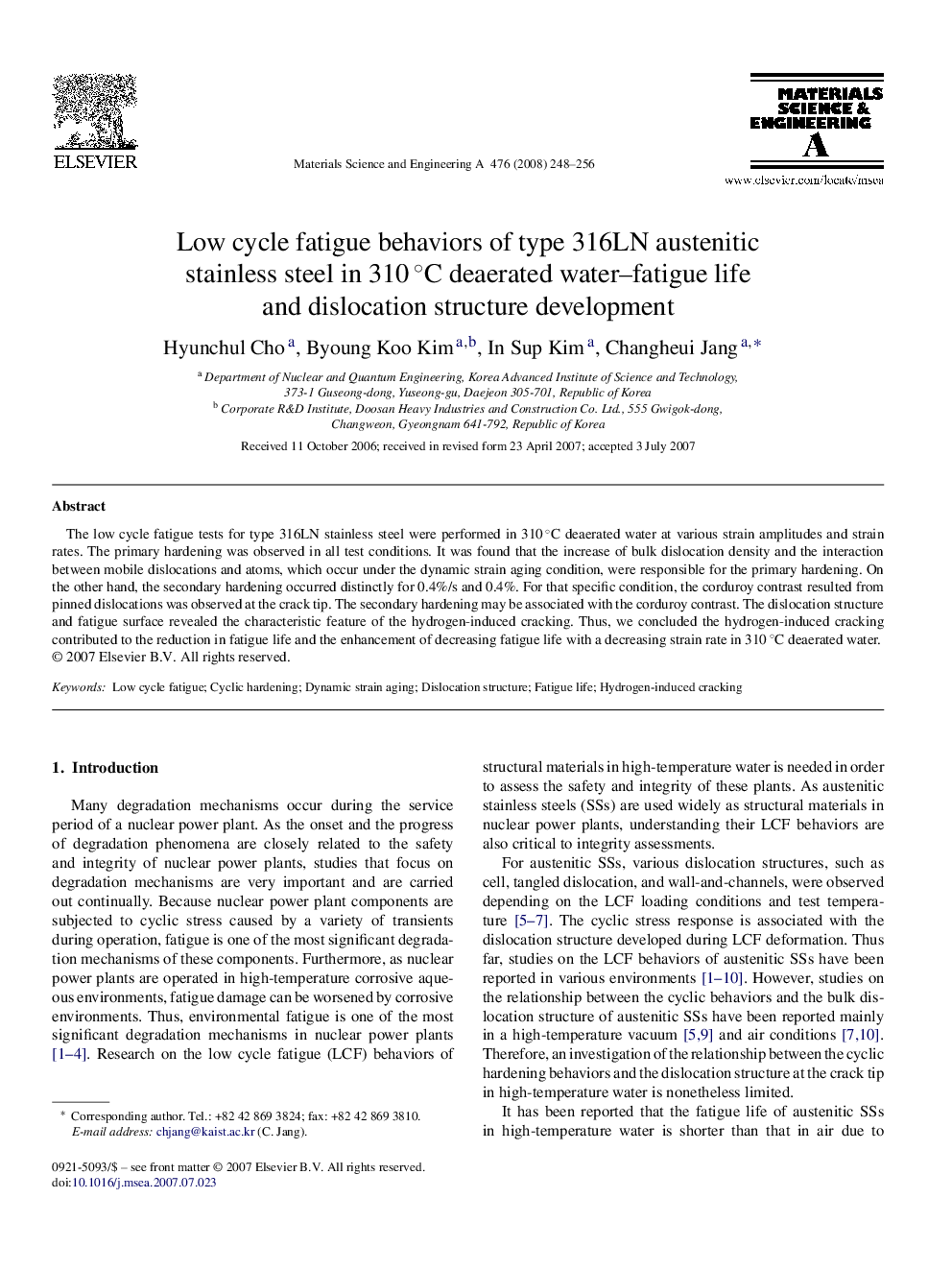| Article ID | Journal | Published Year | Pages | File Type |
|---|---|---|---|---|
| 1582842 | Materials Science and Engineering: A | 2008 | 9 Pages |
The low cycle fatigue tests for type 316LN stainless steel were performed in 310 °C deaerated water at various strain amplitudes and strain rates. The primary hardening was observed in all test conditions. It was found that the increase of bulk dislocation density and the interaction between mobile dislocations and atoms, which occur under the dynamic strain aging condition, were responsible for the primary hardening. On the other hand, the secondary hardening occurred distinctly for 0.4%/s and 0.4%. For that specific condition, the corduroy contrast resulted from pinned dislocations was observed at the crack tip. The secondary hardening may be associated with the corduroy contrast. The dislocation structure and fatigue surface revealed the characteristic feature of the hydrogen-induced cracking. Thus, we concluded the hydrogen-induced cracking contributed to the reduction in fatigue life and the enhancement of decreasing fatigue life with a decreasing strain rate in 310 °C deaerated water.
